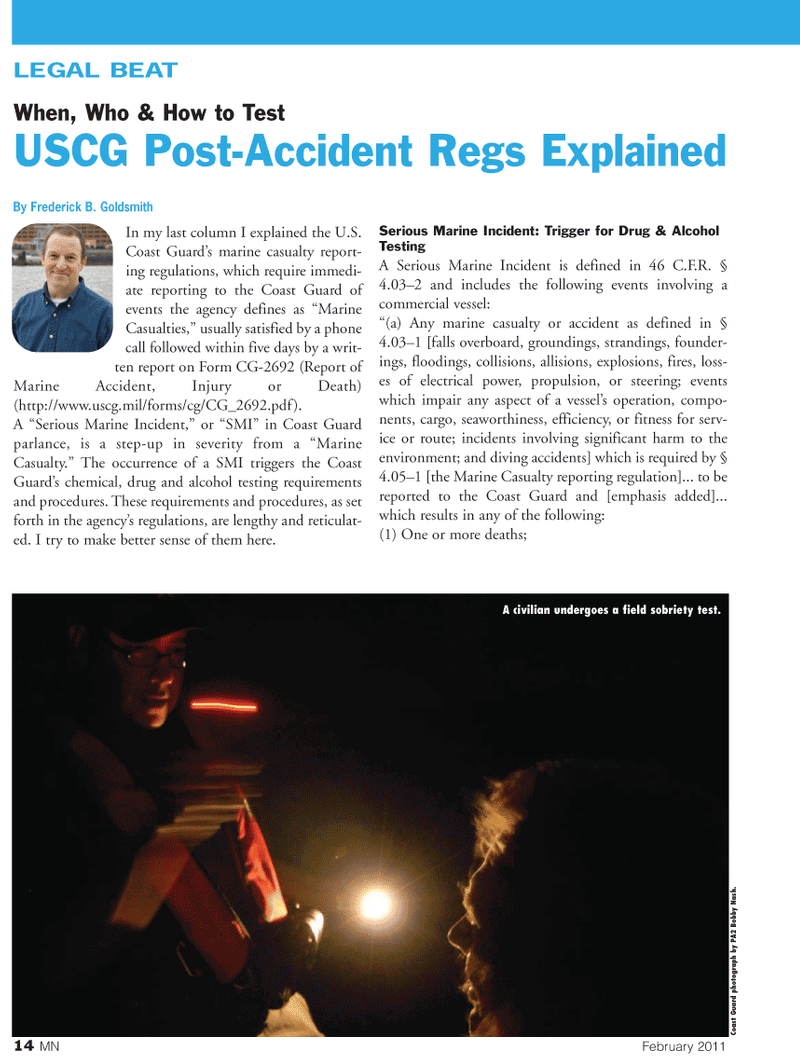
Page 14: of Marine News Magazine (February 2011)
Inland Waterways
Read this page in Pdf, Flash or Html5 edition of February 2011 Marine News Magazine
14 MN February 2011
LEGAL BEAT
In my last column I explained the U.S.
Coast Guard’s marine casualty report- ing regulations, which require immedi- ate reporting to the Coast Guard of events the agency defines as “Marine
Casualties,” usually satisfied by a phone call followed within five days by a writ- ten report on Form CG-2692 (Report of
Marine Accident, Injury or Death) (http://www.uscg.mil/forms/cg/CG_2692.pdf).
A “Serious Marine Incident,” or “SMI” in Coast Guard parlance, is a step-up in severity from a “Marine
Casualty.” The occurrence of a SMI triggers the Coast
Guard’s chemical, drug and alcohol testing requirements and procedures. These requirements and procedures, as set forth in the agency’s regulations, are lengthy and reticulat- ed. I try to make better sense of them here.
Serious Marine Incident: Trigger for Drug & Alcohol
Testing
A Serious Marine Incident is defined in 46 C.F.R. § 4.03–2 and includes the following events involving a commercial vessel: “(a) Any marine casualty or accident as defined in § 4.03–1 [falls overboard, groundings, strandings, founder- ings, floodings, collisions, allisions, explosions, fires, loss- es of electrical power, propulsion, or steering; events which impair any aspect of a vessel’s operation, compo- nents, cargo, seaworthiness, efficiency, or fitness for serv- ice or route; incidents involving significant harm to the environment; and diving accidents] which is required by § 4.05–1 [the Marine Casualty reporting regulation]... to be reported to the Coast Guard and [emphasis added]... which results in any of the following: (1) One or more deaths;
When, Who & How to Test
USCG Post-Accident Regs Explained
By Frederick B. Goldsmith
Coast Guard photograph by PA2 Bobby Nash.
A civilian undergoes a field sobriety test.

 13
13

 15
15
